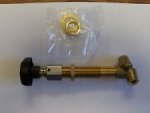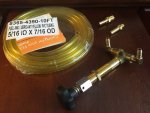Also I would like to see a TM where it calls to fill the uninstalled filter before install.
It's in TM 9-2320-279-20-1
Section 4-9 For the Fuel-Water Separator:
1 - Open drain valve and drain fuel-water separator.
2 - Remove T-handle, preformed packing, lid, and preformed packing.
3 - Remove filter element.
4 - Install filter element.
5 - Close drain valve.
6 -
Pour clean diesel fuel into body of fuel-water separator until full.
7 - Wet lid and preformed packing with fuel.
8 - Install preformed packing, lid, preformed packing, and T-handle.
Section 4-11 For the Secondary Fuel Filter:
a. Removal.
NOTE - Secondary fuel filter is a spin-on type.
1 - Remove filter element and gasket from housing.
NOTE - Remove housing only if replacement is necessary.
2 - Remove fuel line and elbow from housing.
3 - Remove fuel line and bushing from housing.
4 - Remove fuel line and elbow from housing.
5 - Remove plug, two screws, lockwashers, washers, and housing.
b. Installation.
NOTE - Follow steps (1) through (5) only if new housing is to be installed.
1 - Install housing with two screws, lockwashers, and washers.
2 - Install plug.
3 - Install elbow and connect fuel line.
4 - Install bushing and connect fuel line.
5 - Install elbow and connect fuel line.
6 -
Fill filter element with fuel.
7 - Moisten gasket with fuel.
8 - Install filter element and gasket on housing. Hand tighten filter element.
Jon





